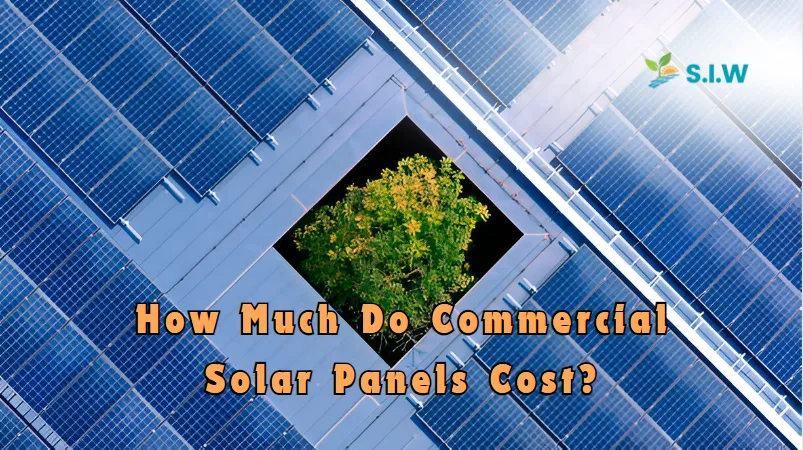Commercial solar panel systems have rapidly gained popularity as a cost-effective and eco-friendly solution for businesses. As energy prices continue to rise and concerns about sustainability grow, many companies are turning to solar power to meet their energy needs. However, the cost of commercial solar panels is a key consideration when deciding whether to make the switch. In this article, we will break down the factors that influence the cost of commercial solar panels, typical price ranges, and the long-term financial benefits of investing in solar energy for businesses.
Factors Influencing the Cost of Commercial Solar Panels
Several factors determine the overall cost of a commercial solar power system. These include:
1. System Size and Energy Requirements
The size of the solar system needed is the most significant factor influencing the total cost. Commercial solar systems are typically larger than residential ones, with capacities ranging from 25 kW to several megawatts (MW). The larger the system, the more solar panels, inverters, and racking equipment are required.
Average Costs by System Size:
- 25 kW – 50 kW systems: $50,000 to $100,000
- 100 kW – 250 kW systems: $150,000 to $350,000
- 500 kW – 1 MW systems: $500,000 to $1,000,000
- 1 MW and larger systems: $1,000,000 and up
2. Panel Type and Efficiency
The type of solar panels selected can significantly impact the price. High-efficiency panels, such as monocrystalline panels, are more expensive but generate more electricity per square foot compared to polycrystalline or thin-film panels. While monocrystalline panels can cost more upfront, they may offer better value in the long run by maximizing energy production, especially for businesses with limited roof space.
3. Installation Complexity
The complexity of the installation plays a significant role in the total cost. Factors such as roof type, structural integrity, and the need for additional infrastructure, like transformers or advanced electrical work, can increase the overall price. Ground-mounted systems may also require additional land and site preparation, which adds to the cost.
4. Location and Local Incentives
Geographical location affects the cost in two ways: solar irradiance and labor costs. Areas that receive more sunlight require fewer panels to meet energy needs, which can reduce costs. Additionally, labor costs vary by region, with urban areas typically being more expensive. However, many states and municipalities offer solar incentives, such as rebates, tax credits, and grants, which can significantly lower the cost of installing a commercial solar system.
5. Inverters and Other Equipment
Inverters, which convert DC power from the panels into usable AC power, vary in price based on their size and type. Advanced inverters with capabilities like battery storage integration can increase the total cost. Other equipment such as racking, cabling, monitoring systems, and backup power options also contribute to the overall price.
6. Ongoing Maintenance and Warranty
While solar systems require minimal maintenance, ensuring optimal performance over time comes with some costs. High-quality warranties for panels, inverters, and installation typically range between 10 to 25 years and may offer an extended warranty for additional peace of mind. Maintenance costs should also be factored into the overall investment.
Solar Panels (45%)
The cost of the actual solar panels makes up the largest portion of the total cost, generally around 45%. The price varies based on panel efficiency and brand, but businesses can expect to pay between $0.70 to $1.00 per watt for high-quality commercial solar panels.
Inverters (10%)
Inverters, which convert the energy generated by the panels into usable power, account for about 10% of the total cost. For most commercial systems, inverters will cost between $0.15 to $0.30 per watt.
Mounting and Racking (15%)
The equipment needed to secure the panels to the roof or ground takes up around 15% of the total cost. This price can increase if the mounting site requires extra reinforcement or customization.
Labor (20%)
Labor costs vary by region but generally make up about 20% of the overall expense. This includes the work done by solar installers, electricians, and any required structural or engineering assessments.
Miscellaneous Equipment (10%)
This category includes wiring, monitoring systems, transformers, and other components essential for the operation of a commercial solar system.
Financial Benefits and Return on Investment
1. Energy Savings
One of the primary financial benefits of installing a commercial solar system is the reduction in energy bills. Depending on the size of the system and the business’s energy consumption, solar can offset a significant portion of electricity costs. Many businesses see a return on their solar investment within 5 to 10 years, with savings continuing for decades.
2. Incentives and Tax Benefits
In the United States, the federal Investment Tax Credit (ITC) allows businesses to deduct 30% of the cost of installing a solar energy system from their federal taxes. Additionally, some states and municipalities offer rebates, grants, and other financial incentives to reduce the upfront cost of commercial solar panels.
3. Increased Property Value
Commercial properties with solar installations often see an increase in property value. Solar panels can make a building more attractive to buyers and tenants who are looking for energy-efficient properties with lower operating costs.
4. Sustainability and Corporate Responsibility
Investing in solar energy helps businesses reduce their carbon footprint and demonstrates a commitment to sustainability. This can improve a company’s public image, attract environmentally-conscious clients, and provide a competitive edge in industries that prioritize corporate social responsibility.
Conclusion
The cost of commercial solar panels can vary greatly depending on system size, panel type, location, and installation complexity. However, the long-term financial benefits—including reduced energy costs, tax incentives, and increased property value—make solar power a wise investment for many businesses. By carefully considering these factors and choosing a reputable solar installer, businesses can enjoy significant energy savings and a strong return on investment while contributing to a more sustainable future.








